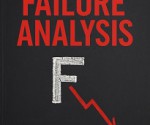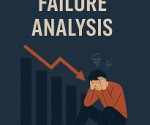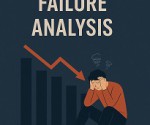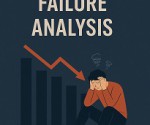TEST 1 ENVIRONMENT ISSUES (MOST EXPECTED QUESTIONS)HCS PRELIMINARY EXAM 2017
TEST 1 ENVIRONMENT ISSUES (MOST EXPECTED QUESTIONS)HCS PRELIMINARY EXAM 2017
TEST 1 (ENVIRONMENT, MOST EXPECTED QUESTIONS) HCS PRELIMINARY EXAM 2017
ANS TEST 1 ENVIRONMENT 5 JAN 2017
HCS PRELIMINARY EXAM 2017 (NOTIFICATION IN JAN/FEB,2017 & EXAM IN APRIL/MAY 2017)
Program Objective : Our objective is to target “100 QUESTIONS OF GS PAPER I (APRIL/MAY 2017,HCS PRELIMINARY EXAM 2017)”
Strategy:
- Step by Step right Guidance through 57 Sectionwise Test(Only the most probable questions) & 10 Full Length Test, Total 67 TESTS (ONLY MOST EXPECTED QUESTIONS) .
- Detailed solution will be given to students after each test for understanding the concepts of General Studies.
- Classroom(offline) & Online Test (Soft Copy Only) facilities available.
Nature: difficulty level & nature of questions based on HPSC pattern
Date of Mock Test: Flexible (Reschedule on the demand of the aspirants)
STARTING – 5 JANUARY, 2017
Under the Guidance of Abhi Sir (writer of about 20 books for IAS & HARYANA CIVIL SERVICES EXAMS, Director & Founder : KUSHMANDA IAS HCS ACADEMY)
What you will get:
- 67 Mock Test Papers & Answer Explanations
- Login id & Password
- Experts Support: Telephonic Discussion / Email Interaction
FEE: Rs 6000/- (Including All Tax)
| Test No | Date of Mock Test | Topics Covered(Most Expected Questions Only) | Essential References |
| 1 | January 5,2017 | Environment Policies ,laws & act(Haryana & India),Environment impact assessment,Environment Problems,energy crisis,Concepts & Components of the Environment, Terrestrial ecosystem, Aquatic ecosystem, Bioremediation, Radioactive pollution,E-Waste,Pollutants, Climate Change,Acidification, Eutrophication,Ozone Depletion, Mitigation Strategies, India and Climate Change, Environmental conventions &organizations | Down to Earth magazine,Our Environment –NCERT (VII)- Ecology andEnvironment – ICSEbooks 9th to 12th -Ecology &Environment (IndiaYear Book), Kushmanda Notes |
| 2 | January 7,2017 | Zoology:Biocommunication.Cell Biology,Life processes – Nutrition, Respiration, Muscle movement, skeletal system,circulatory system, excretion, Genetics – The science of heredity,Diseases and Defence Mechanisms,Origin and Evolution of life | 11th and 12th NCERT : Science Kushmanda Notes, |
| 3 | January 9 | EconomyI:Companies Act,Make in India, Skill India, PPP, Investment models ,Recent initiatives taken by the govt,PDSFive year Plans: Priorities and Performance, Issues related to planningEconomic Policies till 1991 ,Economic Reforms since 1991: End of license Raj, Liberalization, Privatisation and Globalisation, FDI, FII, issues, challenges etc. |
Indian EconomyDutta andSundaram, 11th NCERT:Economics: IndianEconomicDevelopment- 12thNCERT:Economics:Macroeconomics-Indian Economy
(Special Issue) - Pratiyogita Darpan,Kushmanda Notes |
| 4 | January 11 | HARYANA ECONOMY I | Kushmanda notes, Arihant book |
| 5 | January 13 | HARYANA ECONOMY II | Kushmanda notes, Arihant book |
| 6 | January 15 | Physics:Standards and units,Mechanics and properties of matter,Heat,Sound, Optics, Electricity and Magnetism, Atomic and Nuclear physics, Modern Physics , Astronomy and Space Science | 11th and 12th NCERT: ScienceKushmanda Notes |
| 7 | January 17 | Chemistry: Matters and its nature, Chemical Reactions and Equations, Structure of the Atom,Periodic classification of elements, Chemical Bonding,Carbon and its compoundAcid, Bases and Salts ,Metals and Nonmetals Thermodynamics,Nanotechnology,Agricultural Chemistry, Medicinal Chemistry, Food Chemistry, Bio Chemistry , Polymers and Plastics | 11th and 12th NCERT: Science,Kushmanda Notes |
| 8 | January 19 | Current Affairs (dec-2016) | THE HINDU, THE TRIBUNE,Kushmanda Notes |
| 9 | January 21 | Ancient history I: Prehistoric period ,Harappan / Indus Valley Civilization ,Vedic Age,Mahajanapadas ,Religious Reforms | KUSHMSNDA NOTES |
| 10 | January 23 | Ancient History II: Mauryan Age & Post Mauryan Age ,Sangam Age,Guptas Age & Post Guptas Age | KUSHMSNDA NOTES |
| 11 | January 25 | Art & Culture :Architecture: Indus Valley Civilization, The Mauryan Architecture, The Sungas, Kushanas, Satavahanas & Guptas, The Temple Architecture, Indo-Islamic Architecture,Modern Architecture Sculpture: Indian Sculpture and Different schools of Art | KUSHMSNDA NOTES |
| 12 | January 27 | Art & Culture: Indian Paintings: Historical development – Wall Paintings, Cave and Mural Paintings, Miniature Paintings, Mughal Paintings, Rajput Paintings, Folk Paintings, Other Paintings, Modern IndianPaintings & PersonalitiesReligion and Philosophy :Religion: Hinduism, Jainism, Buddhism,Islam, Christianity, Zoroastrianism, JudaismPhilosophy: Six Schools of Philosophy,Ajivika, Lokayata etc. | KUSHMSNDA NOTES |
| 13 | January 29 | Ancient History: Indian Music: Classical Music, Hindustani Music, Carnatic Music, Folk Music TraditionIndian Dance: Classical Dance forms in India,Folk Dances, Modern Dance in IndiaPuppetry and Theatre: Different forms ofPuppetry in India, Theatres in India: FolkTheatre, Modern Theatre, People Associatedwith Theatres, Indian Cinema and CircusLanguage & Literature: Indian Language,Indian Literature | KUSHMSNDA NOTES |
| 14 | January 31 | GEOGRAPHY I: Origin and evolution of Universe, Solar systemGeological History of the EarthGeological Time scaleLatitude and Longitude including importantParallels and MeridiansMotions of the Earth and their effectsInclination of the Earth’s Axis and its effectsLocal and Standard Time and the InternationalDate Line, CalendarEclipses – Solar, LunarThe Atmosphere – Structure, Composition
Aurora and Magnetic Storms Weather & Climate Insolation, Heat Budget, Distribution of temperature, Temperature Inversion Pressure and Pressure belts Winds – Planetary, Seasonal and Local; Jet Streams Precipitation – Forms & Types, Distribution of rainfall Air Masses, Cyclones and anti-cyclones |
NCERT:Fundamental ofPhysical Geography- Certificate physicaland humangeography – Goh,Cheng Leong- Old NCERT Books ofGeography(Class 9,10,11,12)
Kushmanda Notes |
| 15 | FEBRUARY1 | GEOGRAPHY II: Oceans of the world – Features, Ocean waves,currents, tides & Tsunamis, Temperature &Salinity distribution, marine resourcesThe Lithosphere – Interior structure of the earth, Earth’s crust, Classification of rocks.Landform Development – First order (continental drift theory, sea floor spreading, plate tectonics theory), Second order (Mountains, Plateaus, Plains & other landforms) Internal forces & their impact – Volcanoes, Earthquakes, Folding, Faulting, Isostasy) External forces & their impact – Weathering,Erosion & landforms thus developed Soils – Classification, distribution, erosion &Conservation ,World Climatic regions ,Continents – Major physical features, naturalresources ,Map Based Questions from India (Location of state,city, river, lakes, minerals, important places including Ramsar sites, Biosphere Reserves, Wildlife Sanctuaries and National Parks) | NCERT:Fundamental ofPhysical Geography- Certificate physicaland humangeography – Goh,Cheng Leong- Old NCERT Books ofGeography(Class 9,10,11,12) |
| 16 | FEBRUARY 3 | POLITY I:Political systems: Democratic & NonDemocratic,Parliamentary & Presidential,Unitary & Federal,Direct and Representative,Republicand Monarchy etc.ConstitutionalismHistorical Underpinnings ,Evolution & Making of the Constitution ,Features and Significant Provisions ,The Preamble ,The Union and its Territory ,Citizenship | Class IX and X NCERT:Democratic Politics- 11th NCERT: IndianConstitution at Work- Indian Polity by MLaxmikanth |
| 17 | FEBRUARY 5 | POLITY II:Fundamental Rights ,Directive PrinciplesFundamental Duties ,Amendment of Constitution, President ,Vice President | Class IX and X NCERT:Democratic Politics- 11th NCERT: IndianConstitution at Work- Indian Polity by MLaxmikanth Kushmanda Notes |
| 18 | FEBRUARY 7 | Fairs, Festivals and Craft: Religious Festivals,Secular Festivals (States & UT’s), Art & CraftsScience & Technology,Ancient, Science &Technology, Medieval Science & Technology,Famous Personalities in Ancient and Medieval IndiaPromotion and Preservation of IndianHeritage: Indian Word Heritage Sites, CulturalHeritage Sites, Natural Heritage Sites,Important Institutions | KUSHMSNDA NOTES |
| 19 | FEBRUARY 9 | POLITY III:Prime minister ,Central Council of Ministers and Cabinet committees Parliament: The Council of States, The House of People, Disqualification and Vacation ofSeats, Presiding Officers of Parliament, Houses:Their Working, Legislative Procedures in Parliament, Budget, Powers and Functions of Parliament: Its Role, Committees ofParliament, Parliamentary ForumsGovernor ,Chief Minister ,State Council of Minister ,State Legislature ,Indian FederalismCentre State Relations ,Emergency Provisions | Class IX and X NCERT:Democratic Politics- 11th NCERT: IndianConstitution at Work- Indian Polity by MLaxmikanth Kushmanda Notes |
| 20 | FEBRUARY 11 | POLITY IV: Panchayati Raj ,Local Urban GovernmentSupreme Court ,High Courts ,Subordinate Courts: District Courts, Gram Nyayalayas, ADRs, NALSA etc., Structure, organization and functioning of the Executive,Ministries and Departments of the Government. | Class IX and X NCERT:Democratic Politics- 11th NCERT: IndianConstitution at Work- Indian Polity by MLaxmikanth Kushmanda Notes |
| 21 | FEBRUARY 13 | HARYANA GEOGRAPHY I | Kushmanda notes, Arihant book |
| 22 | FEBRUARY 15 | HARYANA GEOGRAPHY II | Kushmanda notes, Arihant book |
| 23 | FEBRUARY 17 | POLITY V:Constitutional BodiesElection Commission ,Union Public Service Commission (UPSC) .State Public Service Commission (SPSC) .Finance CommissionCAG ,Attorney general of India ,Advocate general of India ,Special officer for Linguistic Minorities ,National Commission for Scheduled Castes (NCSC) ,National Commission for Scheduled Tribes (NCST) | Class IX and X NCERT:Democratic Politics- 11th NCERT: IndianConstitution at Work- Indian Polity by MLaxmikanth Kushmanda Notes |
| 24 | FEBRUARY 19 | POLITY VI:Non-Constitutional BodiesNITI Aayog ,NHRC, Governing Council, SHRC, CIC, SIC, CVC,CBI, Lokpal, Lokayukta, NCPCR etc.Other Constitutional DimensionsProvisions related to Language ,Rights and Liabilities of the government ,National Commission to Review the Working ofthe Constitution ,Co-operative societies ,TribunalsGovernance e-Governance ,RTI, Citizen’s Charter & Anti-Corruption | Class IX and X NCERT:Democratic Politics- 11th NCERT: IndianConstitution at Work- Indian Polity by MLaxmikanth Kushmanda Notes |
| 25 | FEBRUARY 21 | Indian Geography Major Crops grown in IndiaAgro-Climatic RegionsTypes of Cultivation and FarmingLand Reforms and Land use patternAnimal Husbandry, Fisheries and AquacultureWater Resources- Availability and potential:Lakes, rivers, dams, power and irrigationprojects, wetlands and inter-linking of riversMineral Resources- classification and distributionEnergy Resources- conventional and nonconventional
resources Population and Growth trends – density, sex ratio, literacy, tribes and racial groups in India Rural and Urban Settlements- types and patterns ,Industries- types and their locational factors ,Transport and Communication -railways, highways, inland water transport, shipping and sea-ports, air transport |
NCERT:Fundamental of Physical Geography- Certificate physicaland humangeography – Goh,Cheng Leong- Old NCERT Books ofGeography(Class 9,10,11,12) Kushmanda Notes |
| 26 | FEBRUARY 23 | World Physical Geography: Location: Latitude, Longitude, Tropic of Cancer and Tropic of CapricornImportant physical features & regions of theworld ,Climate, Vegetation and Soils | NCERT:Fundamental ofPhysical Geography- Certificate physicaland humangeography – Goh,Cheng Leong- Old NCERT Books ofGeography(Class 9,10,11,12) Kushmanda Notes |
| 27 | FEBRUARY 25 | World Economic Geography:Agriculture, Industry, Mineral resources,Infrastructure, Location factors and distribution of key natural resources across the worldWorld Population, density & distribution, races & tribes, settlements & migrationMap Based Questions from World (Location ofstate, city, mountains, plateaus, river, lakes,minerals etc.) | NCERT:Fundamental ofPhysical Geography- Certificate physicaland humangeography – Goh,Cheng Leong- Old NCERT Books ofGeography(Class 9,10,11,12) Kushmanda Notes |
| 28 | FEBRUARY 27 | Medieval IndiaEarly Medieval Period: North India and South IndiaSultanate Period: The Delhi Sultanate,Vijayanagar & other Kingdoms, ReligiousMovements, Bhakti Movement, SufiMovement | KUSHMSNDA NOTES |
| 29 | MARCH1 | Mughal Period | KUSHMSNDA NOTES |
| 30 | MARCH3 | India under East India Company’s Rule Administration- Struggle among European powers in India- Regulating Acts and Charter Acts: Regulating Actof 1773, Pitt’s India Act 1773 and Charter acts of1784, 1793, 1813,1833, 1853- Indian Kingdoms in 18thcentury: Marathas,Punjab, Mysore, Hyderabad etc.- British Expansion policy: Doctrine of lapse,
Subordinate alliance etc. - Economic policies and their impact - Education Policies
|
Old NCERT: ModernIndia by Bipin Chndra-India’s struggle forIndependence – BipinChandra |
| 31 | MARCH 5 | Works of British Governor Generals- Socio – Religious Reform Movements in the19th century India: Brahmo Samaj, Arya Samaj,Theosophical Society, Ramakrishna Movement,Muslim reform movements, Parsi reformmovements, Sikh Reform Movements etc.- The Great Revolt of 1857- Changes in Indian Administration after 1858- Growth of Political Ideas and PoliticalOrganisations (up to 1885) Foundation of the Indian National Congress- Moderate Phase (1885 – 1905)
|
Old NCERT: ModernIndia by Bipin Chndra-India’s struggle forIndependence – BipinChandraKushmanda Notes |
| 32 | MARCH 7 | The rise of Extremism or Neo-Nationalism- The first phase of Revolutionary Terrorism- Partition of Bengal and the Swadeshi Movement- The Surat Split- The Foundation of All-India Muslim League- The Morley-Minto Reforms or the Indian CouncilsAct, 1909- The Delhi Durbar and the Annulment of Partitionof Bengal (1911)- The Lucknow Pact (1916)- The Home Rule Movement
- Montague Declaration (1917) - Montague-Chelmsford Reforms or the Government of India Act, 1919 - The Beginning of the Gandhian Era - The Khilafat Movement (1920-22) and Non Cooperation Movement - Thc Swarajya Party
|
Old NCERT: ModernIndia by Bipin Chndra-India’s struggle forIndependence – BipinChandra Kushmanda Notes |
| 33 | MARCH 9 | HISTORY :The Left Movement- The second phase of Revolutionary and Terrorist Movement – Anti-Simon Commission Agitation (1928-29)- Nehru Report, 1928 – Fourteen Points of Jinnah – The Lahore Session, 1929 – The Civil Disobedience Movement (The firstphase)- The Dandi March, March 12, 1930 — March 5,1931- Gandhi-Irwin Pact, 1931 , Second Round Table Conference, 1931,Second Phase of Civil Disobedience Movement ,Third Round Table Conference, 1932 ,The Government of India Act, 1935,Provincial Elections and Formation of popular Ministries in Provinces, 1937 Other Political Developments, 1934-39 , The Struggle in the Princely States: The PrajaMandal Movement — Communalism: Different phases and forms of communalism in British India,The Second World War and the National,Movement,The August Offer 1940,The Individual Satyagraha 1940-41 ,The Cripps Proposal, 1942 | Old NCERT: ModernIndia by Bipin Chndra-India’s struggle forIndependence – BipinChandra Kushmanda Notes |
| 34 | MARCH 11 | ECONOMY:National Income Accounting: ● Definition● Concepts: GDP, GNP, Market Price and FactorCost, NNP, NDP, transfer payments, Nationalincome at FC, Personal Income, disposableincome, factors affecting national income, netforeign facto income● Measurement of national income: valueadded method, income method, expendituremethod, Application of various methods, Baseyear, GDP deflator
● Debates around GDP and other indices Money and Banking
Evolution of Money, Money supply in India and factors affecting it
o Need of banks, Function, Commercial Banks o Central Bank: Importance, functions, Structure, Policy tools, Monetary Policy (CRR, SLR, OMO, Repo and Rev Repo, MSF etc.) o Banking Reforms |
11th NCERT:Economics: IndianEconomicDevelopment- 12thNCERT:Economics:Macroeconomics-Indian Economy(Special Issue) -Pratiyogita Darpan-Economic Survey of
India Kushmanda Notes |
| 35 | MARCH 13 | The Quit India Movement, I942- Subhas Bose and Indian National Army- Wavell Plan and Simla Conference 1945- General Elections in India, 1945- Naval Mutiny: 1946- The Constituent Assembly- Attlee’s Declaration- The Indian Independence Act, 1947- PartitionOther Dimensions- Tribal Movements
- Peasants Movement - Dalit Movements - Women movements - Role of Press and Publications - Role of Business groups - Foreign policies of British India - Miscellaneous: Reforms / Acts / Committee, Congress Sessions, Governor –General Viceroys etc. |
Old NCERT: ModernIndia by Bipin Chndra-India’s struggle forIndependence – BipinChandra Kushmanda Notes |
| 36 | MARCH 15 | HARYANA CURRENT AFFAIRS I | Kushmanda notes, THE TRIBUNE NEWS PAPER |
| 37 | MARCH 17 | HARYANA CURRENT AFFAIRS II | Kushmanda notes, THE TRIBUNE NEWS PAPER |
| 38 | MARCH 19 | Inflation: Definition, Inflationary Gap andInflationary Process, Inflation Cycles: DemandPull Inflation, Cost Push Inflation, Causes ofInflation, Inflation Control measures
Structural, Seasonal, Frictional, Cyclical, Nature of Unemployment in India Government budgeting and Fiscal Policy
Institutions and Laws, The Union Budget: Components – Revenue Account, Capital Account, Measures of Government Deficit etc., Weaknesses in the Budgetary Process
Importance, Public Expenditure – Revenue and Capital, Development and Non-Development, Public Revenue – Sources of Revenue, Taxes: Classification, Direct and Indirect, Specific and Ad Valorem, Social and Economic Objectives of Taxes, Objectives of Taxation, GST, d.) Public Debt, Deficit Financing External Sector and Currency Exchange rate
Capital Accounts, Convertibility, Items Included in BoP, BoP and BoT
Objectives, Organization and Functions, Working and Evaluation, IMF and Underdeveloped Countries, SDR’s, Reforms etc., World Bank, Bilateral and Regional Cooperation Capital Markets
Instruments, Primary market and Secondary markets etc. |
11th NCERT:Economics: IndianEconomicDevelopment- 12thNCERT:Economics:Macroeconomics-Indian Economy(Special Issue) -Pratiyogita Darpan-Economic Survey of
India Kushmanda Notes |
| 39 | MARCH 21 | CURRENT AFFAIRS NOV 2016 | THE HINDU,THE TRIBUNE NEWSPAPERKushmanda Notes |
| 40 | MARCH 23 | CURRENT AFFAIRS OCT 2016 | THE HINDU,THE TRIBUNE NEWSPAPER |
| 41 | MARCH 25 | CURRENT AFFAIRS SEPT2016 | THE HINDU,THE TRIBUNE NEWSPAPER |
| 42 | MARCH 27 | CURRENT AFFAIRS AUG 2016 | THE HINDU,THE TRIBUNE NEWSPAPER |
| 43 | MARCH 29 | CURRENT AFFAIRS JULY2016 | THE HINDU,THE TRIBUNE NEWSPAPER |
| 44 | APRIL1 | CURRENT AFFAIRS JAN 2017 | THE HINDU,THE TRIBUNE NEWSPAPER |
| 45 | APRIL 3 | CURRENT AFFAIRS JUNE 2016 | THE HINDU,THE TRIBUNE NEWSPAPER |
| 46 | APRIL 5 | CURRENT AFFAIRS FEB 2017 | THE HINDU,THE TRIBUNE NEWSPAPER |
| 47 | APRIL 7 | Economic Survey 2015-16 | |
| 48 | APRIL 9 | Budget 2016 – 17 | |
| 49 | APRIL 11 | India Year Book 2016 PART I | |
| 50 | APRIL 13 | India Year Book 2016 PART II | |
| 51 | APRIL 15 | FULL INDIAN HISTORY | |
| 52 | APRIL 17 | FULL GEOGRAPHY | |
| 53 | APRIL 19 | FULL SCIENCE | |
| 54 | APRIL 21 | FULL ECONOMY | |
| 55 | APRIL 23 | FULL POLITY | |
| 56 | APRIL 25 | FULL HARYANA GK I | |
| 57 | APRIL 27 | FULL HARYANA GKII | |
| 58 | APRIL 29 | FULL LENGTH TEST ( COMPLETE SYLLABUS ) | |
| 59 | APRIL 31 | FULL LENGTH TEST ( COMPLETE SYLLABUS ) | |
| 60 | APRIL 1 | FULL LENGTH TEST ( COMPLETE SYLLABUS ) | |
| 61 | APRIL 3 | FULL LENGTH TEST ( COMPLETE SYLLABUS ) | |
| 62 | APRIL 5 | FULL LENGTH TEST ( COMPLETE SYLLABUS ) | |
| 63 | APRIL 7 | FULL LENGTH TEST ( COMPLETE SYLLABUS ) | |
| 64 | APRIL 9 | FULL LENGTH TEST ( COMPLETE SYLLABUS ) | |
| 65 | APRIL 11 | FULL LENGTH TEST ( COMPLETE SYLLABUS ) | |
| 66 | APRIL 13 | FULL LENGTH TEST ( COMPLETE SYLLABUS ) | |
| 67 | APRIL 15 | FULL LENGTH TEST ( COMPLETE SYLLABUS ) | |
- Fee has to be paid through Net banking.
- Trust, quality and reliability the bywords for KUSHMANDA EDUCATION SERVICES PVT LTD will remain our guiding force for both Preliminary as well as Main Exam.How to send request:Only one single call on our helpline number 08607570992,09728926678orStudents can download the respective application form.
KUSHMANDA IAS HCS ACADEMY(REGD)
OPP IB COLLEGE,NEAR HDFC BANK
GT ROAD,PANIPAT
MAIN BRANCH:
KUSHMANDA EDUCATION SERVICES PVT LTD
C-100, TDI CITY,
PANIPAT
HARYANA
Helpline: 08607570992, 09728926678
HELPLINE:8607570992,9728926678
“Making good decisions is a crucial skill at every level.” So join us
immediately.
FINAL SELECTION IN HCS :
1)SEEMA SAINI(KURUKSHETRA)
2)WAKIL AHMAD(MEWAT)
3)ABHISHEK BATRA(KAITHAL)
4) VIRENDER BANSAL (AMBALA)
5) POOJA GOYAT( JIND)
6) PANKAJ DHANDA(HISAR)
7) JYOTI CHAHAL (ROHTAK)
8) MANAV MALIK (BAHADURGARH)
9) SHASHI VASUNDHARA(HISAR)
10) NAVDEEP (SONIPAT)
11)BAHARAT PAL (BHIVANI)
12)JITENDER KUMAR
13)HEMANT KUMAR
14)MANOJ KAUSHAL
15)MANISH KUMAR
16)NARESH KUMAR
17)SURENDER SINGH
18)VIKAS JAKHAR etc
















